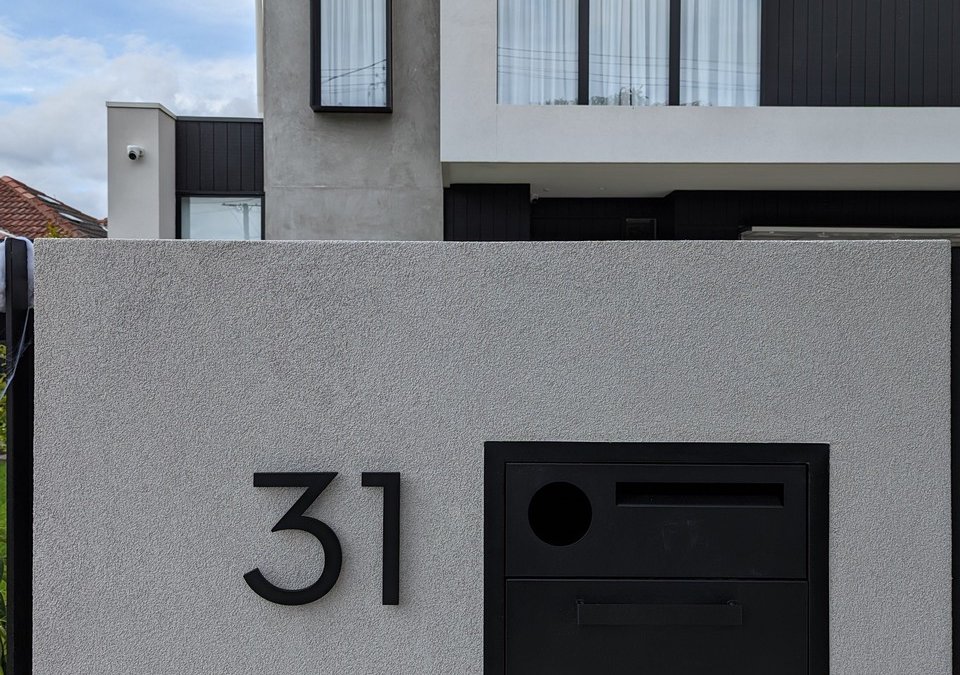
Letterbox numbers play a crucial role in your home, as they assist friends, family, emergency services, and postal workers in locating your address. It is essential to have letterbox numbers that are easily visible from the street, but not too large that they appear unsightly. Here are some guidelines to help you choose the ideal letterbox numbers and house numbers for your residence.
In today’s diverse exterior landscape, homeowners are increasingly drawn to modern house numbers that seamlessly blend form and function. These contemporary numbering options not only fulfill their practical purpose but also contribute to the overall aesthetic of your property. As you explore your choices for letterbox numbers, consider the elegance and sophistication that modern house numbers can bring to your home’s exterior. Now, let’s delve into the key factors to weigh when selecting the perfect letterbox numbers for your unique needs.
Material and durability
Larger numbers are more likely to be flimsy, so when selecting large house numbers, opt for durable materials like aluminium that will last for a considerable time. Since letterbox numbers can be expensive, it is essential to choose numbers that can withstand wear and tear and weather conditions.
Investing in high-quality house numbers made from long-lasting materials will make a significant difference in their durability and appearance on your home. Thick plastic or metal is an excellent choice for house numbers exposed to sun, wind, water, and other weather elements that might damage or degrade them.
Font style

Another factor to consider is the font style of the numbers. Larger numbers will be easier to read, even if the font is intricate or unclear. For curvy and loopy fonts, the larger the letter, the easier it will be to read. In contrast, straightforward and bold fonts may work fine with smaller letters. For fonts that are harder to read from a moving vehicle, opt for larger letters that are easier to decipher.
Considering the font style can significantly impact the size of the numbers you need to purchase for your home. Easy-to-read fonts may allow for smaller sizes, while more intricate fonts may require larger sizes to improve readability.
Visibility from a distance
The first and most crucial factor to consider is the distance between your home and the road. If your house is quite far from the street, you will need larger numbers or to move them closer to the road. The distance from the road will be the primary determinant of the size of your house numbers.
To gauge the appropriate size, you can print a sample of the desired size and font, hang it in position, and check its visibility from the street. A visual representation of the numbers can help you determine the right size, especially for homes located far from the road.
Number placement
Lastly, consider the placement of your house numbers or letterbox numbers. Very large numbers may be challenging to position directly on your home but are easier to read from the road. Ensure that there is a clear line of sight from the number to the road to make it easier for people to locate your home without obstructions like foliage or yard items. Also, ensure that the numbers are securely placed.
For large house numbers, it is essential to secure them properly to prevent them from falling off and getting damaged. Ensure that the numbers come with appropriate fixing hardware, such as rods and spacers, to keep them in place. Dislodged numbers can be difficult to read and make it challenging for people to find your home.
High-quality house numbers will make your home easy to locate, look attractive, and last for a long time. Taking the time to find the ideal house number can make a significant difference. At Peninsula House Numbers, we offer a variety of house numbers in different fonts and sizes to suit your needs and your home.
Ava Clarkson
Related posts
Stay connected
Today's pick
- The Importance of Professional Handyman Services for Your HomeYour home is your sanctuary, a place of comfort and security, but maintaining it can be a daunting task. From routine maintenance to unexpected repairs, there’s always something that needs attention. While many homeowners might be tempted to tackle these jobs themselves, not all tasks... The post The Importance of Professional Handyman Services for Your […]

